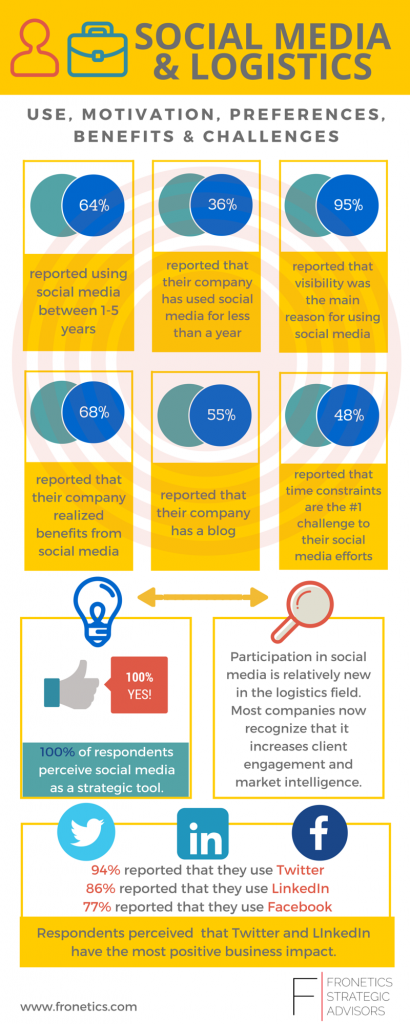by Jennifer Hart Yim | Jun 18, 2015 | Blog, Logistics, Manufacturing & Distribution, Strategy, Supply Chain
This article is part of a series of articles written by MBA students and graduates from the University of New Hampshire Peter T. Paul College of Business and Economics.
Ben Minerd received his B.S. in Computer Engineering from the University of New Hampshire in 2011 and will be completing his MBA from UNH in May 2015. When not working as a systems engineer, Ben enjoys skiing, hiking, and flying drones.
Some of you technologically curious readers may be familiar with Moore’s Law which predicted that the number of transistors in a dense integrated circuit would double every two years. What all that nerd speak (as a nerd I can use that phrase) boils down to is that the processing capability of electronic chips is increasing at a crazy rate. Like, scary fast.
On the flip side, electronics are really cheap these days. Yes, the $10,000 Apple Watch might be a tad pricey, but I’m talking about the industry as a whole. You can buy a computer that fits in your pocket for $200 that is many hundreds, maybe thousands, of times more powerful than my first computer and I’m one of those whiny millennial youngsters.
How can consumer electronics companies afford to sell their scary fast devices this cheaply? One reason is that the devices are being made by other devices (cue ominous music), as automation and electronics manufacturing are natural complements of each other. But another big factor in the cheap tech equation is the ever-increasing separation of technology development from technology manufacturing.
Contract Manufacturing
Big name companies like Apple, Google, Microsoft, and Amazon are doing less and less of their own widget building these days in favor of contract manufacturing (or CM). Contract manufacturing is essentially the outsourcing of your products’ fabrication and assembly to some other company (who is hopefully better at it than you are).
In theory, using a contract manufacturer should lower your costs and give you access to capabilities that you wouldn’t have access to otherwise. This is especially true of small businesses looking to produce physical goods (versus intangibles like software), where the up-front cost of building your own factory is immense and maybe even a non-starter. Or maybe you’re a big tech company who isn’t good at making hardware (ahem, Google) and you want to stick to your core competencies.
Whatever your reason, contract manufacturing is the unicorn that will slash your costs with its rainbow laser beam eyes. Well, maybe not entirely.
Hidden Costs
To loosely paraphrase Pee-wee Herman, every decision we make in business has a big ‘but’. For the economist reader, you can equate this with TANSTAAFL—There Ain’t No Such Thing As A Free Lunch. One action almost always leads to some other potentially unexpected outcome. Certain people have even gone so far as to say this is always the case (some guy named Isaac Newton).
One of the biggest contributors to hidden costs within contract manufacturing is the loss of control over your production processes. While this might be obvious or even desired, there may be some complications as a result of this new relationship that you hadn’t thought of previously.
Communication is always an important topic, but even more so when it comes to contract manufacturing. Not only may your production team physically reside on the other side of the globe, but things like language, culture, and time zone differences can make it difficult to keep good lines of communication open.
Quickly ramping up or ramping down production to meet changing demand can become a lot more challenging, too. This is partly due to the nature of the shared resources that you are buying access to when you team up with a CM.
A classic example of a culmination of these issues came from Cicso in the early 2000’s, back when out-sourcing was in its infancy. Cisco had been riding the surging wave of growth in the telecommunications industry which starting leading to supplier shortages. Shortly thereafter, the bottom fell out of telecom and Cisco forgot to turn off the contract manufacturing tap. Before long, Cisco’s raw-parts inventory rose by more than 300% from Q3 to Q4 2000, leading to a $2.2 billion write-off of inventory. Wall Street responded as you might expect, causing Cisco’s stock to fall by 50%.
The Human Cost
Perhaps the greatest hidden cost is one that may never make it to your company’s balance sheet: exploitation of workers in the developing countries where many contract manufacturers do business. It’s no secret that the biggest driver behind outsourcing is low labor costs. While it’s not always apples-to-apples to compare a production worker’s wage in China to one in the U.S., by any measurement the difference is more than a factor of 10 (although that number is dropping).
This dirty little secret of the consumer electronics industry came to light in 2012 when it was discovered that Foxconn, the largest electronics CM with over $100 billion in revenue and manufacturer of the Apple iPad, was mistreating some of their workers. Conditions grew so bad that in some cases workers decided to jump to their death rather than survive in that environment.
Bottom Line
Contract manufacturing might very well still be the right choice for you, just keep in mind that you may have more “unknown unknowns” than you had, well, known about. The more you can discuss with your CM candidate up front, the better your relationship will likely be. Also, some of these “gotcha’s” can be planned for in the agreement between you and your CM, so don’t skimp on the up-front work. And remember, there is no unicorn with rainbow laser beam eyes. That I know of.

by Fronetics | Jun 17, 2015 | Blog, Internet of Things, Strategy, Supply Chain

Software Advice, a Gartner Company, provides detailed reviews and research on thousands of software applications. The company works with buyers to identify supply chain systems that will meet their needs; therefore, making the buying process a little less murky and arduous.
Software Advice recently released the report: Supply Chain Management Software, BuyerView. The report is based on findings from discussions with supply chain management (SCM) professionals across industry verticals who are seeking to deploy new software solutions.
We talked with Forrest Burnson, Market Research Associate at Software Advice, about the report and its findings:
What were the biggest take aways from the research?
Businesses both large and small are investing heavily into supply chain management software. They’re realizing the power of big data within their organizations and they’re looking for specialized software solutions to help increase visibility into their supply chain. All too often many of these businesses are being hindered by outdated systems and processes.
Where there any surprises? If so, what were they.
Nothing too surprising, though I was definitely a little surprised by the budget estimates the prospective buyers were providing. It makes sense though: Prospective buyers of SCM software tend to be quite savvy, so sticker shock doesn’t affect them as much—they know have an idea of what they’re looking for and they’re willing to fork the money over because they realize the benefits this software can have on their organization.
Do your findings point to any trends (current or future) within the industry?
Software is becoming increasingly important in supply chain management, and more and more smaller businesses are catching on to that trend. Even five years ago there weren’t as many solutions available for SMBs that there are now.
Only 6% of small businesses use commercial SCM software. Why is this?
Many of the smaller businesses got by without commercial SCM software for years, but it’s just not possible for them to continue with their old methods. This also presents a huge opportunity for SCM software vendors, as the SMB market has been historically underserved.
How does it compare to the percentage of larger businesses?
Twenty-one percent of large businesses we spoke with were currently using SCM software.
Small businesses are budgeting more for SCM software. Why is this?
A couple reasons—there are more solutions available to them at a lower price point, and economic pressures are forcing many SMBs to adapt and evolve. That they’re budgeting more tells us that they recognize not only the cost but the return on investment it can potentially have.
Are large businesses also budgeting more?
Yes, we found they are budgeting approximately $171,000 for new SCM software.
To learn more, access the entire report.

by Fronetics | Jun 10, 2015 | Blog, Logistics, Marketing, Social Media, Strategy, Supply Chain
Fronetics Strategic Advisors conducted a survey focusing on social media and logistics and supply chain companies. Respondents shared information on their social media use, motivation, preferences, benefits, and challenges. One-hundred percent (100%) of respondents reported that they have used social media for five years or less, indicating that social media is a relatively new strategy for logistics and supply chain companies. Mirroring other industries, including those in Fortune 500 status, social media is playing an increasingly important role in company branding, marketing, and client engagement.
For the current state of social media and logistics, here is an infographic that summarizes many of the key points from the full report.


by Fronetics | Jun 9, 2015 | Blog, Logistics, Marketing, Social Media, Strategy, Supply Chain

Transfix is poised to disrupt and transform the trucking industry.
Uber, the on-demand driver for hire mobile service, has come to stand for disruption. The company has not only transformed the taxi industry, it has changed everything. Uber, Aaron Levie notes, is a “lesson in building for how the world *should* work instead of optimizing for how the world *does* work.” NY-based start-up Transfix is doing just this. With the launch of the company’s new app, Transfix is poised to disrupt the trucking industry.
The trucking industry is huge. Valued at $800 billion, the industry moves the majority (67%) of freight tonnage in the US. To move this volume of freight, more than 3 million trucks log close to 100 billion miles annually. It is, therefore, not surprising that “truck driver” is the most common job across the US. What is surprising is that the industry is riddled with inefficiencies. One of the greatest inefficiencies has to do with needless miles. Drew McElroy, co-founder of Transfix, estimates that U.S. commercial trucks drive 19 billion needless miles each year. That’s a lot of needless miles.
Together, the industry’s inefficiencies have a significant impact not just on the bottom line, but also on the cost of goods, the environment, our country’s infrastructure, traffic, and on the truck drivers themselves.
 Transfix takes the industry’s inefficiencies head on. Transfix is a digital on-demand freight marketplace. It provides industry-leading mobile technologies and location-based jobs offers for independent over-the-road truck drivers, as well as cloud-based management platforms for small carriers and shippers.
Transfix takes the industry’s inefficiencies head on. Transfix is a digital on-demand freight marketplace. It provides industry-leading mobile technologies and location-based jobs offers for independent over-the-road truck drivers, as well as cloud-based management platforms for small carriers and shippers.
Transfix’s app integrates with the company’s digital marketplace and is driver-centric. The app gives drivers the ability to manage loads, map their itinerary, and manage payments. The app also provides truck drivers with trip planning essentials including the location of showers, ATMs, weigh stations, fuel prices, and weather.
The app is available for iOS and Android.
Barnes and Noble is one of Transfix’s early adopters. According to McElroy, Barnes and Noble has realized improvements in their processes and has seen their deadhead runs (times driving without cargo) cut by at least 50%.
Transfix co-founders Drew McElroy and Jonathan Salama have identified how the trucking industry should work and have provided industry stakeholders with the tools to make it happen. Transfix is poised to disrupt and transform the trucking industry. With Transfix, we are witnessing the Uberfication of trucking.

by Fronetics | Jun 8, 2015 | Blog, Manufacturing & Distribution, Strategy, Supply Chain

For many years robots seemed like the brainchild of science fiction writers and directors, meeting the needs of humans as we saw in the Jetsons, or challenging them as we saw in Battlestar Galatica. Occasionally we hear stories on the news of robots being built in basement labs at prestigious universities such as MIT or Stanford. Recently there was a report on NPR about how one of UCal Berkeley’s robots couldn’t easily figure out how to fold laundry, so, one could ask: what are we worried about? If robots can’t fold laundry in under ten minutes, could they take over manufacturing?
There has been a downward trend in manufacturing jobs since 1980 in the U.S. with similar spirals in Japan, Germany, and China. Is there a correlation between the decrease in manufacturing employment and the rise of the robot? According to the Wall Street Journal, in 2014 most industrial robots were operating in the same countries/regions: Japan (306,700 robots), North America (237,400), China (182,300), South Korea (175,600), and Germany (175,200).
In the same WSJ article, a new generation of robots is profiled. These robots are “smarter, more mobile, more collaborative, and more adaptable.” They are also less bulky and less dangerous for humans to work next to. One might say that the newest generation of robots is acquiring many of the positive qualities of human workers, and that that, combined with many skills humans don’t and can’t possess, makes them the ultimate worker. If robots supersede the work humans can physically do, in a faster, safer, more efficient way, then what will come of the human worker?
Many believe that robots will allow for manufacturers to return to the U.S. from their low-paying, cost-saving plants overseas. They also believe that robots won’t take away from jobs, but rather create them. According to the International Federation of Robotics (IFR), robots actually create millions of jobs. The IFR’s reports oppose the idea that manufacturing jobs are waning. In 2011 article Positive Impact of Industrial Robots on Employment, the author, Metra Martech, stated, “The German and Japanese (automotive) manufacturers who have invested heavily in automation and robots have maintained a lead in the quality market. Germany has increased the number of people employed in the automotive sector.”
The IFR also states that there are many other benefits to robots in manufacturing:
- robots carry out work in areas that would be unsafe for humans.
- robots carry out work that would not be economically viable in a high wage economy.
- robots carry out work that would be impossible for humans.
“The Second Economy”, one in which computers have business interactions only with other computers, is upon us. According the to economist, Brian Arthur, who coined the term, things might not look so bright for the future of the American worker. He states, “If the Second Economy does achieve that rate of growth, it will be replacing the work of approximately 100 million workers. To put that number in perspective, the current total employed civilian labor force today is 146 million. A sizeable fraction of those replaced jobs will be made up by new ones in the Second Economy. But not all of them. Left behind may be as many as 40 million citizens of no economic value in the U.S alone. The dislocations will be profound.”
Others, some who are at the forefront of technology, are also very concerned about the rise of robots. Apple co-founder, Steve Wozniak, is one of the worried. He was recently quoted saying, “Computers are going to take over from humans, no question… Like people including Stephen Hawking and Elon Musk have predicted, I agree that the future is scary and very bad for people. If we build these devices to take care of everything for us, eventually they’ll think faster than us and they’ll get rid of the slow humans to run companies more efficiently.T”
The stuff of sci-fi is becoming a reality. As we humans make the robots that will replace us, only time will tell if that will benefit our race or harm it.
![Women in the Supply Chain; A Discussion [eBook]](https://fronetics.com/wp-content/uploads/2024/10/women.jpg)
by Fronetics | Jun 3, 2015 | Blog, Strategy, Supply Chain

Between 70% and 80% of positions within the supply chain industry are held by men and 95% of top level supply chain positions within Fortune 500 companies are held by men.
The lack of gender diversity is bad for business. Recent research by McKinsey & Company found that companies in the top quartile for gender diversity are 15% more likely to have financial returns above their respective national industry medians. Moreover, Arrow Electronics’ Cathy Morris points put that “diversity enables better decision-making and diminishes group think.”
At Fronetics we believe it is important to discuss the supply chain gender gap, and to work towards closing the gap. We have created an eBook which is inclusive of interviews with:
- Mickey North Rizza, VP, Strategic Services at BravoSolution.
- Cathy Morris, senior vice president and chief strategy officer for Arrow Electronics, Inc.
- Don Firth, founder and CEO of several niche job boards
We invite you to join the discussion: connect with us on LinkedIn or Twitter, or leave us a comment.








![Women in the Supply Chain; A Discussion [eBook]](https://fronetics.com/wp-content/uploads/2024/10/women.jpg)
